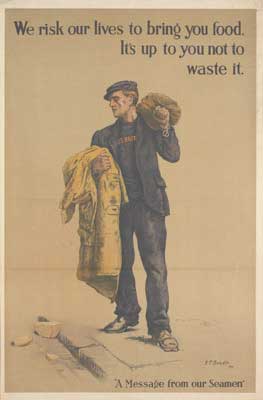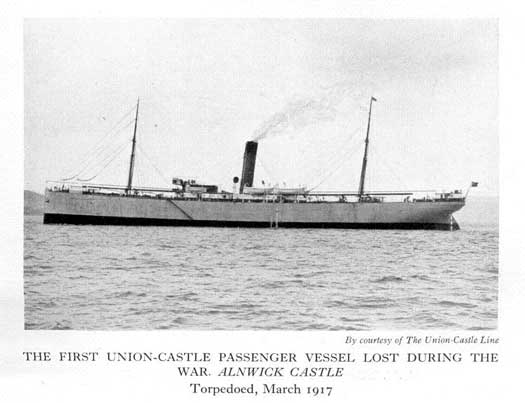The Fleet Exists to Achieve Victory

In July 1914, 8,587 steamers and 653 sailing vessels flew the British mercantile flag – the Red Duster. At the outbreak of war, state control of shipping began with the transportation of the Expeditionary Force to France. But the shipping industry had been caught unprepared. Delays were common. The government soon requisitioned merchant ships to act as armed merchant cruisers, troopships, hospital ships and freighters, gradually withdrawing all merchant ships from trades not directly serving the war effort. However, an armed convoy system wasn't introduced until September 1917. For the Admiralty, to form large numbers of commercial vessels into a convoy created too big a target for the enemy. A single German battleship could destroy several merchant vessels before the others could disperse. The Admiralty thought that the defense of trade could be best accomplished by dispersing merchant vessels and by arming them with defensive weapons. As late as January 1917, this was the official view of the Admiralty. A pamphlet, distributed to staff officers, stated:
"A submarine could remain at a distance and fire her torpedo into the middle of a convoy with every chance of success. A defensively armed merchant vessel of good speed should rarely, if ever, be captured. If the submarine comes to the surface to overtake and attack with her gun the merchant vessel's gun will nearly always make the submarine dive." (Winton, 47)
The exception was troopships, which had always travelled in convoys. Following the Battle of Jutland in late May 1916, German battleships retreated to harbor, and the principal threat against Allied shipping became submarines. Losses soon mounted, and the Admiralty was driven by desperation to introduce the convoy system. The instruction schools that existed in major seaports for merchant officers now offered a five-day instruction course, which outlined zigzagging maneuver patterns and proper placement of lookouts. Naval Transport Officers were detailed to merchant vessels for liaison, and it was through them that the Admiralty passed its orders.
A convoy consists of a group of ships moving together in a group, escorted by warships. Unlike ships sailing independently, convoys could be routed around areas where U-boats were known to be hiding. Forming ships into convoys meant the U-boats had to search a vast ocean for fewer targets. Eastbound convoys gathered in Halifax and Sydney, Nova Scotia, escorted by the Royal Canadian Navy. Royal Navy and United States Navy cruisers served as the ocean escorts. At the height of the convoy system in the summer of 1918, convoys consisted of 25 ships for the anticipated eight day journey across the Atlantic. (Fayle, 431) By the end of the war, ninety-percent of all overseas traffic was under armed escort. (287)

During the summer of 1915, the Admiralty began arming merchant vessels with defensive weapons. Royal Naval Reservists manned the guns. The remaining gunners were chosen from the crew's complement. On March 19, 1917, the Union Castle passenger liner Alnwick Castle was torpedoed and the ship sank. The Crew Agreement, however, survived (Official Number 114784, 1917 MHA). John Iver is listed as "gunner" but not as a naval reservist. The crew agreement tells us that he was born in Borve on the Isle of Lewis in the Outer Hebrides of Scotland, a traditional whaling community. His previous work experience on whaling vessels, perhaps manning a harpoon gun, might well suggest he was chosen to support the nine reservists stationed aboard the Alnwick Castle.
